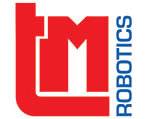Worcester Polytechnic Institute Researcher Leads $2.5 Million Study to Develop New Robotics for Recycling Centers
Partnerships & New Products to Automate Growth in the Mobile Logistics Robot Industry
Human Nurses and Robotic Nurses: A Symbiotic Relationship
The Invasion of AI/ML into Android Smartphones
Why Smart Warehousing is the Future of Ecommerce
RoboticsTomorrow - Special Tradeshow Coverage
FABTECH EXPO Chicago
Integration of Robotics & AI in Architecture for Future Homes
Rise and Rule of Cobots
Rebel Robot Helps Researchers Understand Human-machine Cooperation
The Human Touch
Making the Move to Mobile
US Digital Automates Production Process Using Robot and In-House Engineering Talent
The Surgical Robot that Unfolds Inside the Abdomen
AI Apocalypse
Slotless Brushless Servo Motors Improve Machine Performance.
Records 811 to 825 of 2057
First | Previous | Next | Last
Featured Product

Boston Dynamics Webinar - Why Humanoids Are the Future of Manufacturing
Robotics and Automation - Featured Company

